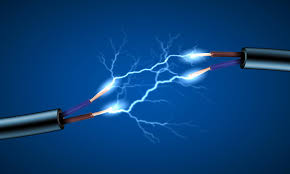The Role of electric dipoles in 3D Electromagnetic Interactions

Electric dipoles are fundamental in understanding the behavior of electromagnetic fields, especially in three-dimensional (3D) spaces. In various scientific and technological domains, electric dipoles play a vital role in explaining how charged particles interact with their surroundings. This article delves into the role of electric dipoles in 3D, their influence on electromagnetic fields, and their significance across multiple fields of science and engineering.
What is an Electric Dipole in 3D?
An electric dipole consists of two equal and opposite charges separated by a small distance. When considering the electric dipole in 3D, the charges are positioned in a spatial arrangement that allows them to interact with their surrounding environment in complex ways. The simplest model of an electric dipole involves two point charges, +q and -q, separated by a distance ddd. However, in 3D, the orientation and position of the dipole relative to external fields significantly affect how it behaves.
The electric dipole moment, denoted by p\mathbf{p}p, is a vector quantity. It is defined as the product of the charge magnitude and the displacement vector between the charges. Mathematically, it can be expressed as:
p=q⋅d\mathbf{p} = q \cdot \mathbf{d}p=q⋅d
where qqq represents the charge, and d\mathbf{d}d is the displacement vector pointing from the negative charge to the positive charge. This vector nature of the dipole moment is crucial in analyzing how the dipole interacts with electric and magnetic fields in 3D spaces.
Electric Dipoles and Their Interaction with Electric Fields in 3D
Electric dipoles in 3D interact with electric fields through their dipole moments, resulting in phenomena such as polarization and the creation of dipole fields. When placed in an external electric field, an electric dipole experiences a torque that causes it to align with the field. This alignment of the dipole is fundamental to cake delivery in dubai the behavior of materials in electric fields, such as in dielectric materials.
The torque τ\tauτ experienced by an electric dipole in an external electric field E\mathbf{E}E is given by the equation:
τ=p×E\tau = \mathbf{p} \times \mathbf{E}τ=p×E
This equation demonstrates how the vector nature of both the dipole moment and the external electric field influences the torque experienced by the dipole in 3D. In addition to torque, electric dipoles also experience a force when the electric field is non-uniform. If the electric field varies spatially, the positive and negative charges of the dipole experience different forces, leading to a net force on the dipole. This net force is essential in understanding molecular interactions and other real-world applications where dipoles play a critical role.
Polarization and Electric Dipoles in 3D
Polarization refers to the alignment of electric dipoles in a material under the influence of an external electric field. When a material is expose to an electric field, the dipoles within the material align themselves, creating an induced dipole moment that leads to polarization. In 3D systems, the ability of dipoles to align in response to the external field is crucial in understanding how materials respond to electric fields.
The polarization P\mathbf{P}P of a material can be express in terms of the dipole moment density p\mathbf{p}p by the equation:
P=pV\mathbf{P} = \frac{\mathbf{p}}{V}P=Vp
where VVV is the volume of the material. In 3D, the polarization of a material can affect its macroscopic properties, such as its ability to store electrical energy. This phenomenon is fundamental in the study of dielectrics, where the alignment of electric dipoles within the material alters its electrical properties. Understanding polarization in 3D also has significant implications for the design and performance of electronic devices, capacitors, and insulators.
Applications of Electric Dipoles in 3D Electromagnetic Interactions

The concept of electric dipoles in 3D is essential in various practical applications across science, engineering, and technology. These applications range from molecular chemistry to advanced communication systems and even quantum technologies. Below, we explore the key applications where electric dipoles in are particularly significant.
Molecular Interactions and Chemistry
Electric dipoles are fundamental to understanding the behavior of polar molecules in chemistry. For example, water molecules are polar, meaning they possess electric dipoles that align with external electric fields. This alignment affects the molecular interactions, such as hydrogen bonding, which plays a key role in the physical properties of substances like boiling points, solubility, and viscosity.
The influence of electric dipoles in molecular chemistry is critical in biochemistry and pharmacology, where the behavior of molecules in 3D environments determines how drugs and other compounds interact with biological systems. Understanding how electric dipoles behave in 3D is key to predicting and optimizing molecular interactions in drug design, enzyme activity, and chemical reactions.
Dielectrics and Insulation Materials
In materials science, electric dipoles in 3D systems are central to understanding the behavior of dielectric materials—substances that do not conduct electricity but can support an electrostatic field. When an electric field is applie to a dielectric material, the dipoles within the material align with the field, creating an induced polarization.
This polarization enhances the ability of the material to store electrical energy, which is an important feature in capacitors and other energy storage devices. The role of electric dipoles in dielectrics is also crucial in the development of insulation materials for electrical wiring, as well as in the design of high-performance electronic components. Understanding the behavior of dipoles in 3D dielectric materials helps engineers design materials with specific electromagnetic properties.
Microwave and Radio Frequency Technologies
Electric dipoles in systems are integral to the operation of antennas and other radio frequency (RF) devices. In electromagnetic wave propagation, dipole antennas are design to efficiently transmit or receive electromagnetic waves. The alignment and behavior of electric dipoles in are essential in antenna theory, which applies to technologies such as satellite communications, wireless networks, and radar systems.
The interaction of electric dipoles with electromagnetic waves is also important in understanding how microwave ovens work, how radar systems detect objects, and how wireless communication networks function. Research into optimizing the behavior of electric dipoles in these systems is ongoing, with potential applications in improving communication efficiency, antenna design, and RF energy harvesting.
Quantum Computing and Nanotechnology
In quantum computing, electric dipoles in 3D are studied for their potential use in qubits—the fundamental units of quantum information. The interaction between electric dipoles in nanoscale systems can influence the behavior of quantum states, making it a crucial area of research for the development of new quantum technologies.
Similarly, in nanotechnology, the manipulation of electric dipoles in structures is essential for designing advanced materials and devices with tailored electromagnetic properties. For example, by carefully controlling the alignment of electric dipoles in nanomaterials, researchers can design substances with specific optical, electrical, or thermal characteristics. These materials have applications in electronics, energy storage, and even medical devices.
Conclusion
The electric dipole in 3D is a fundamental concept in electromagnetism with far-reaching implications across multiple scientific and technological fields. By understanding the role of electric dipoles in electromagnetic interactions, researchers can explain phenomena such as polarization, molecular behavior, and material response to electric fields. These insights are critical for applications ranging from chemistry and materials science to telecommunications, quantum computing, and nanotechnology.
As our understanding of electric dipoles in 3D continues to evolve, so too will their applications in modern science and engineering. From enhancing the performance of electronic devices to advancing quantum technologies, electric dipoles will remain at the forefront of research and innovation.
The Role of Technology in Shaping Modern Highschool Education




